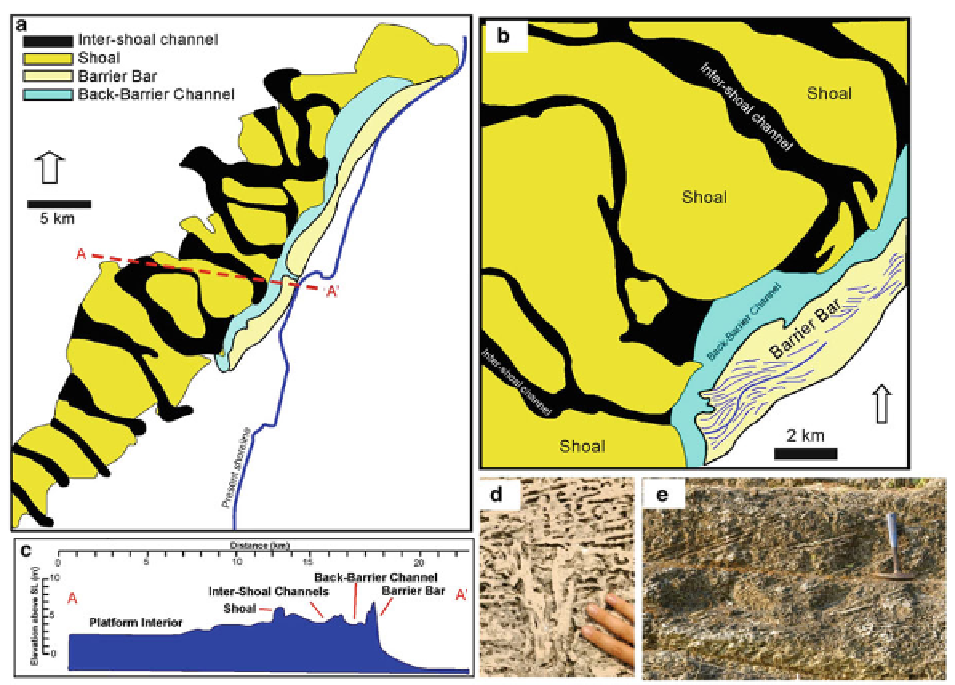Geology Reference
In-Depth Information
Fig. 20.18
Geomorphic patterns in an ancient ooid shoal com-
plex, Pleistocene Miami Oolite, Florida, modifi ed from Halley
et al. (
1977
) . (
a
) General facies patterns and dimensions of part
of the coastal ridge in the Miami area, and the paleogeomorphic
interpretations. (
b
) Detail of one area, illustrating the earlier
shoal and inter-shoal channels, and the later barrier bar.
(
c
) Representative topographic profi le across the bar system.
In terms of lateral and vertical scale, this system is broadly
comparable with the Joulter Cays system (cf. Fig.
20.17
).
(
d
) Downward-oriented, chevron-like anemone burrow cutting
through cross-bedding. (
e
) Preserved cross-bed sets, 30-40 cm
tall. Both sets are oriented in the same direction, as in many
systems, probably related to fl ood- or ebb-dominance in a spe-
cifi c location
porous, cross-laminated ooid-skeletal grainstone, and
eventually with another subaerial exposure surface and
paleosol (Ladore Shale). Overlying the paleosol is
another oolitic grainstone deposit (Mound Valley
Limestone) which has variable thickness, ranging from
3 m to absent, but is capped with another paleosol (the
Galesburg Shale). Comparable to Holocene examples,
this Upper Carboniferous example illustrates how
breaks in slope and subtle embayments that focus tidal
currents can be important factors infl uencing where
these bars occur. Similarly, the Mound Valley ooid
shoals stacked on the Bethany Falls high illustrate the
important role of subtle paleotopographic highs that
can focus tidal fl ows and favor formation of ooids.
Unlike Holocene examples, however, many ancient
systems have been extensively modifi ed by diagenesis.
For example, a well-sorted oolitic sand of a Holocene
accumulation may include abundant interparticle pore
space (Fig.
20.2e-g
). In many cases, the pore space is
partly fi lled by calcite or aragonite cement, of marine
(Fig.
20.3b, c
) or meteoric (Fig.
20.3h, i
) origin. The
aragonite that makes up the ooids is diagenetically
unstable, however, and a change in conditions (e.g.,
subaerial exposure and fl ow of meteoric fl uids through
the sand) may lead to partial or complete dissolution of
ooids, leaving behind molds of the former grains
(Fig.
20.21
). With progressive diagenesis, more grains
and even cements may be recrystallized (Fig.
20.21c,
d
). Clearly, the heartbreak of diagenesis can lead to
many diffi culties in trying to discern the details of the
geologic history or distribution of porosity and perme-
ability in ancient oolitic successions.

